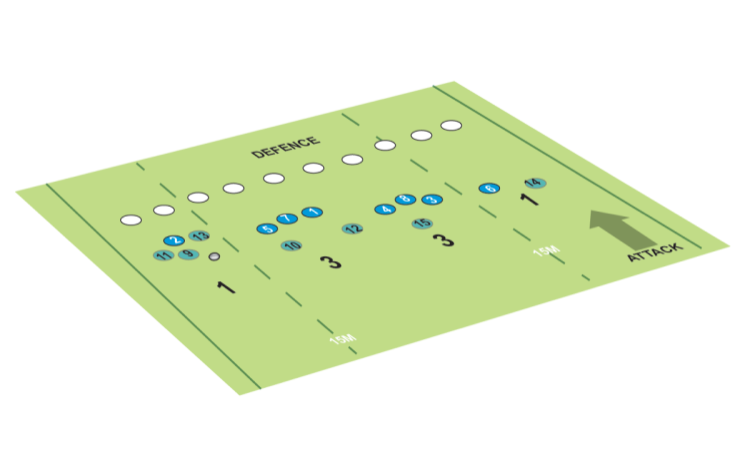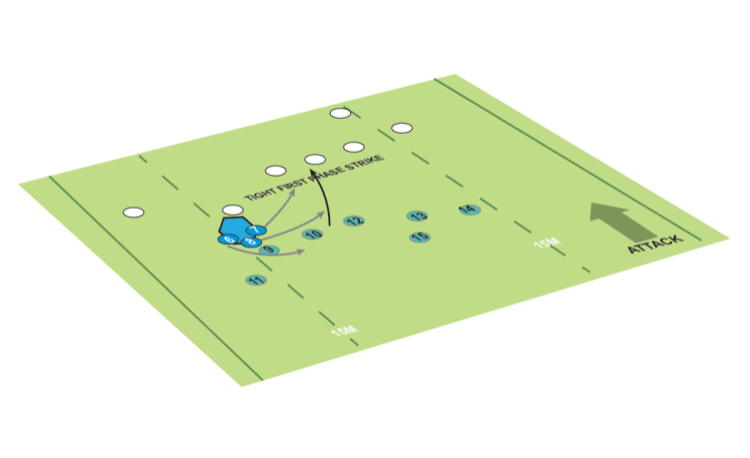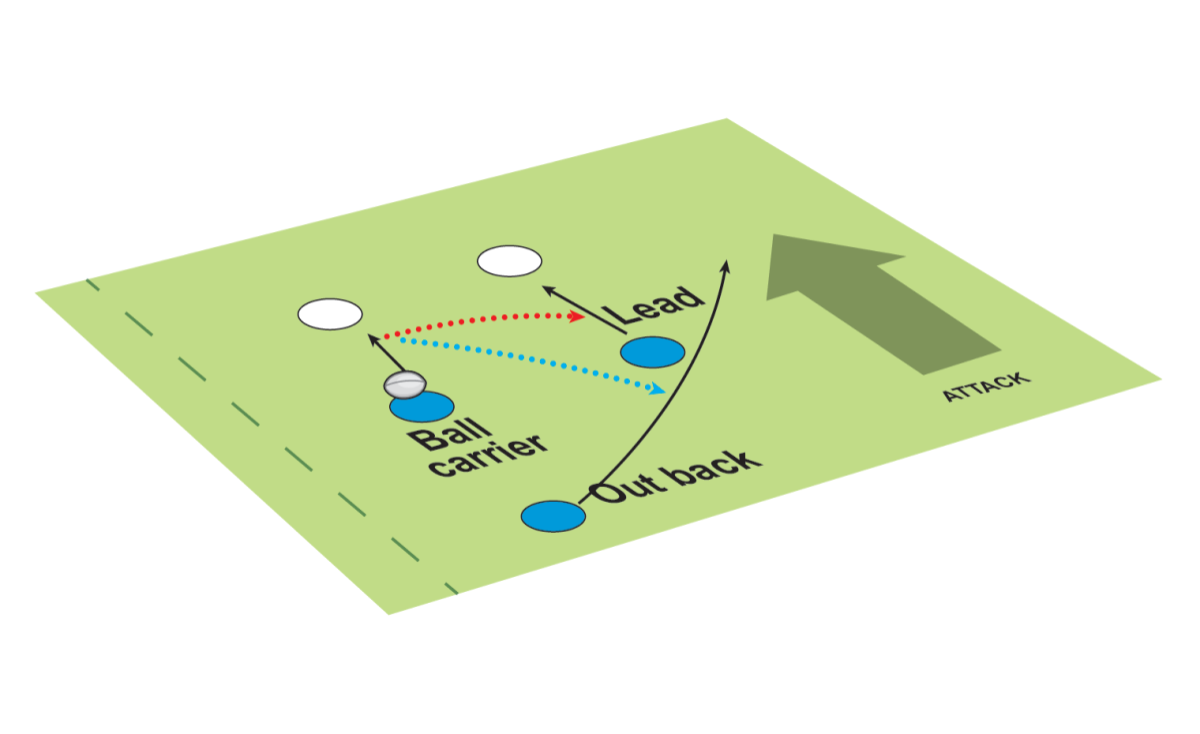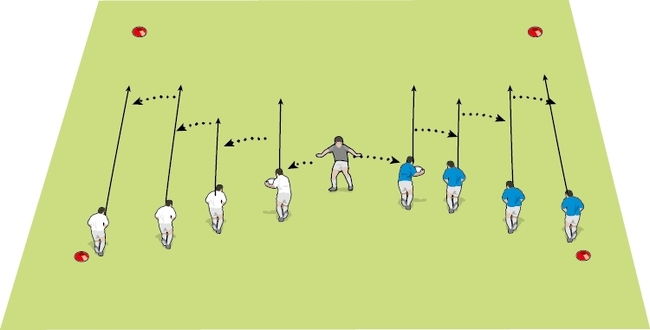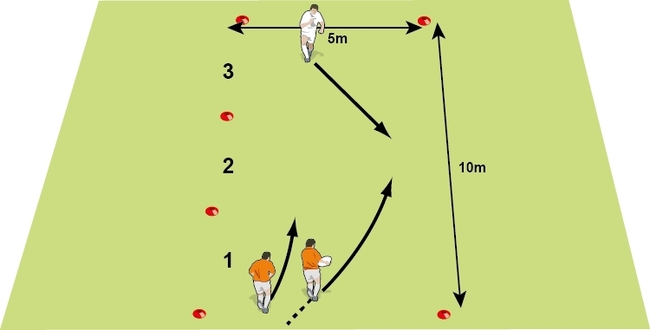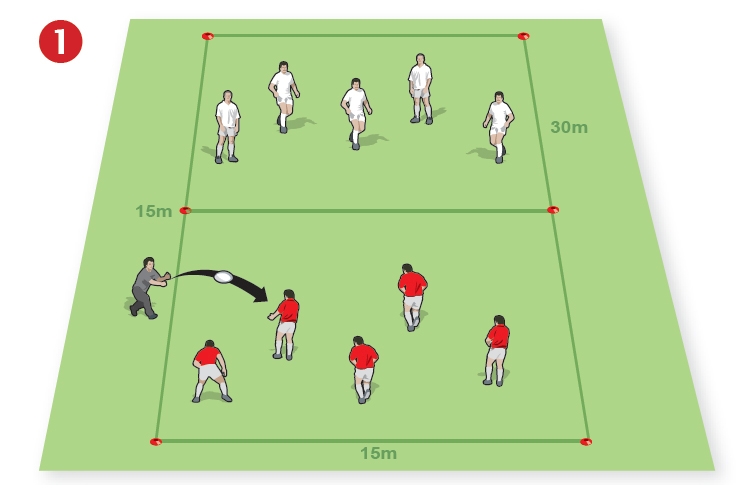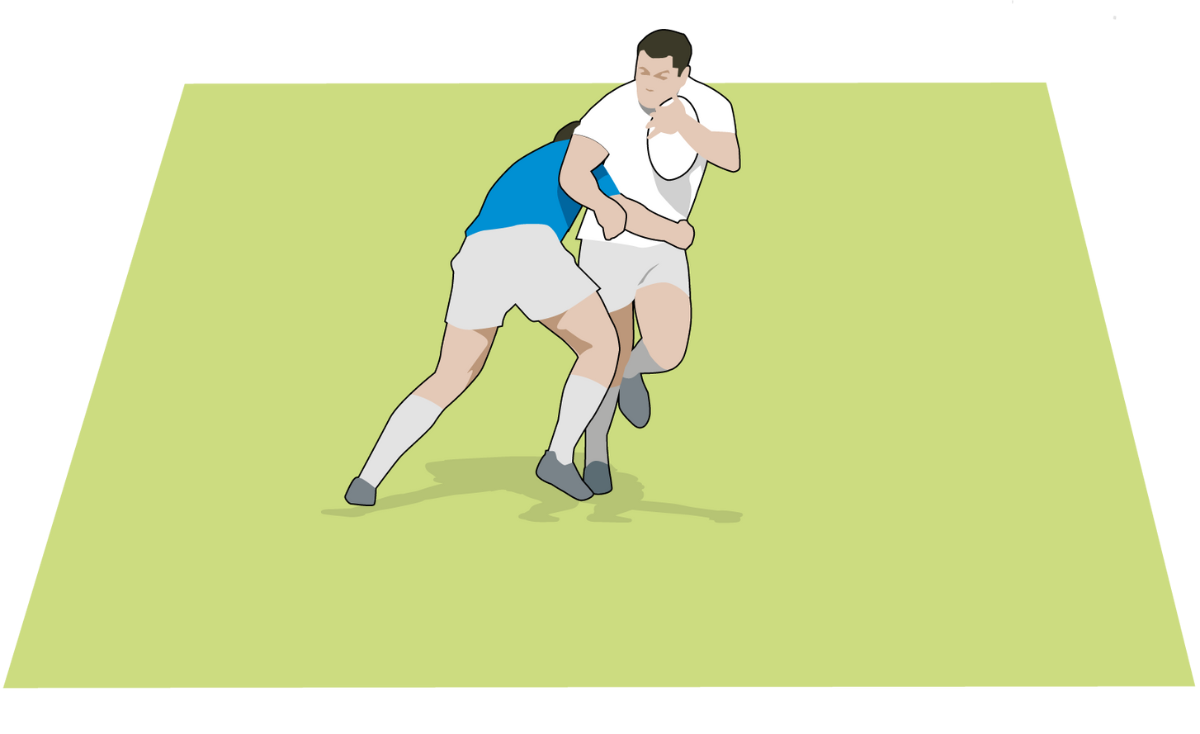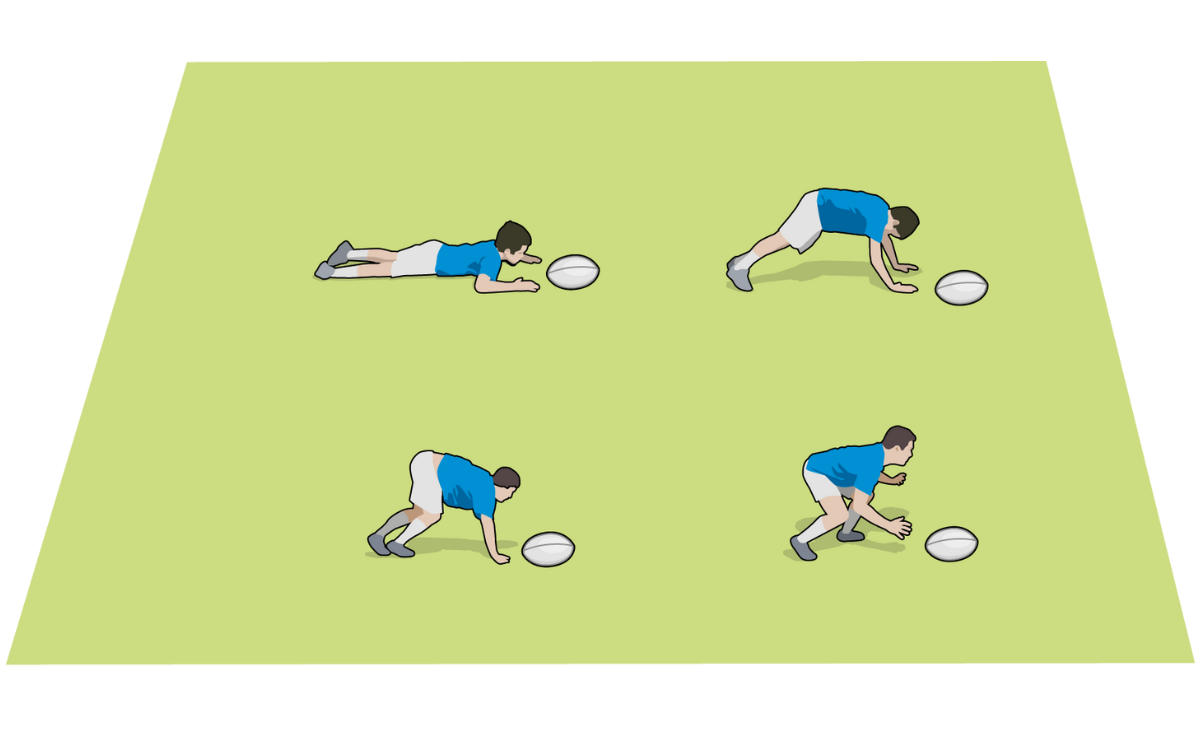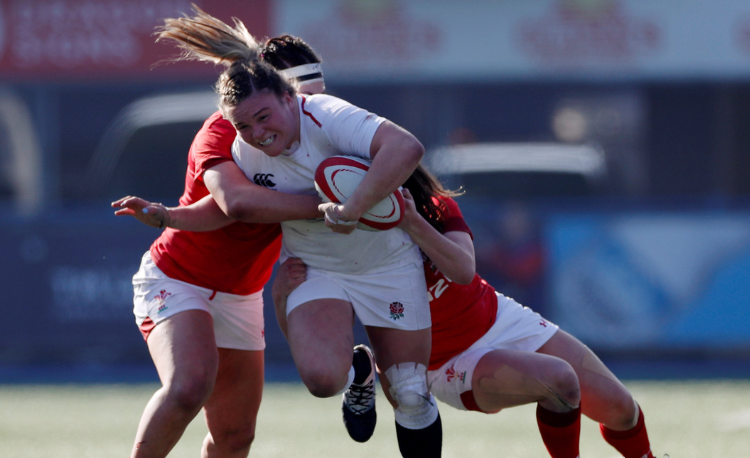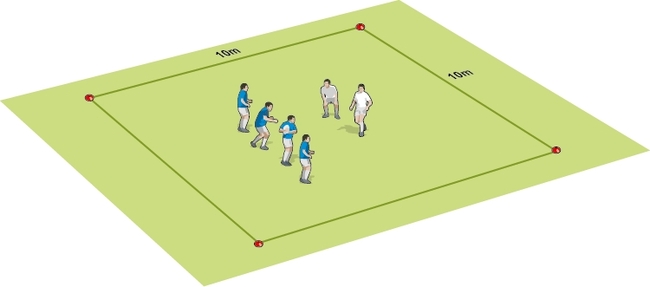The 1-3-3-1 attacking framework
RICHARD WHIFFIN on implementing a structure to improve attacking options.
The magic word ‘shape’ is used a lot in pro rugby by coaches, players and pundits - but how can it help at other levels of the game?
In its purest form, attacking shapes are simple, connected moves that allow the attacking team to know what they are doing and give several options for the ball player.
Micro shape
In the example shown below, the ball player has three options - carry; pass a short ball to the ‘lead’ player; or pass a deep ball behind the lead to the ‘out back’ player.
All the players know the options and where to run, with regards to defence, allowing the ball carrier to make better-informed decisions, reacting to the opposition’s defensive actions.
Macro shape
Linking small attacking shapes to a wider attacking framework will give the whole team an understanding of where their own players will be to exploit defensive mismatches or errors.
It is essential to state that the main rationale of employing an attacking framework is to create scenarios where the attack has quick ball, overlaps or mismatches.
Several different attacking frameworks are used in the professional game, which shows the spread of the forwards across the pitch. The most used framework is a 1-3-3-1 system.
As highlighted in the diagram (below), a 1-3-3-1 framework has one forward in the wide channel (15m lines), on both the left- and right-hand side of the field, and six forwards in the middle of the field, split into two working pods of three.
Related Files
Selecting players for these roles should see more athletic players in the wide channels to exploit the extra space given, and more powerful players in the middle pods to combat the tighter defensive setups.
Having an attacking unit split across the field allows a team to attack in several different ways. The wide forward channel gives you constant width to play around a team, the forwards in the middle of the field allow for a more direct attack to play through a team and the spread across the field allows for a kicking game to play over a team.
It is vital for all forwards in this framework to interact with the backs to run, kick or pass into the space available.
This framework provides the outside backs (wingers) more freedom to work off their wing and look for attacking touches in the middle of the field, as the wide forward will continue to maintain width in attack.
The forward pods in the middle of the pitch provide more numbers around the ball to be direct and play through an opposing team.
Tight connections between the individuals and the pods allow for a short passing game at the defensive line to create one-on-one collisions and close support play, which, in turn, should create gain-line winning rucks - but, more importantly, quick ball speed to play off.
Newsletter Sign Up
Coaches Testimonials

Gerald Kearney, Downtown Las Vegas Soccer Club

Paul Butler, Florida, USA

Rick Shields, Springboro, USA

Tony Green, Pierrefonds Titans, Quebec, Canada
Subscribe Today
Be a more effective, more successful rugby coach
In a recent survey 89% of subscribers said Rugby Coach Weekly makes them more confident, 91% said Rugby Coach Weekly makes them a more effective coach and 93% said Rugby Coach Weekly makes them more inspired.
Get Weekly Inspiration
All the latest techniques and approaches
Rugby Coach Weekly offers proven and easy to use rugby drills, coaching sessions, practice plans, small-sided games, warm-ups, training tips and advice.
We've been at the cutting edge of rugby coaching since we launched in 2005, creating resources for the grassroots youth coach, following best practice from around the world and insights from the professional game.
